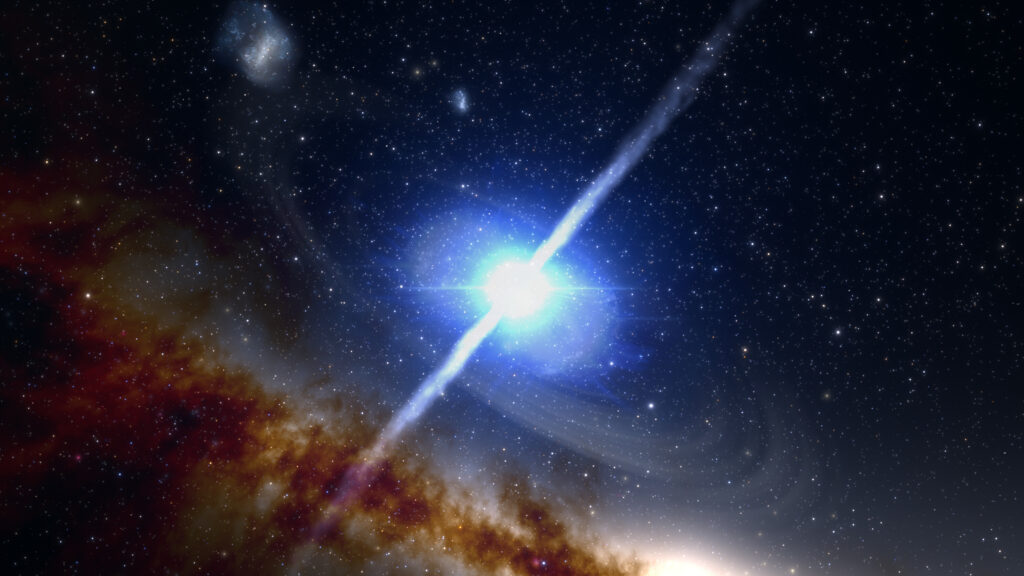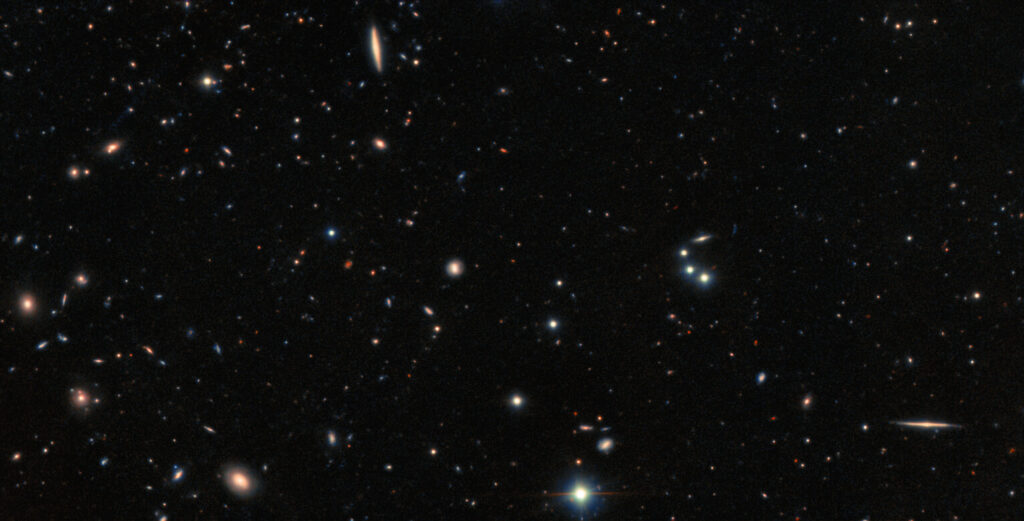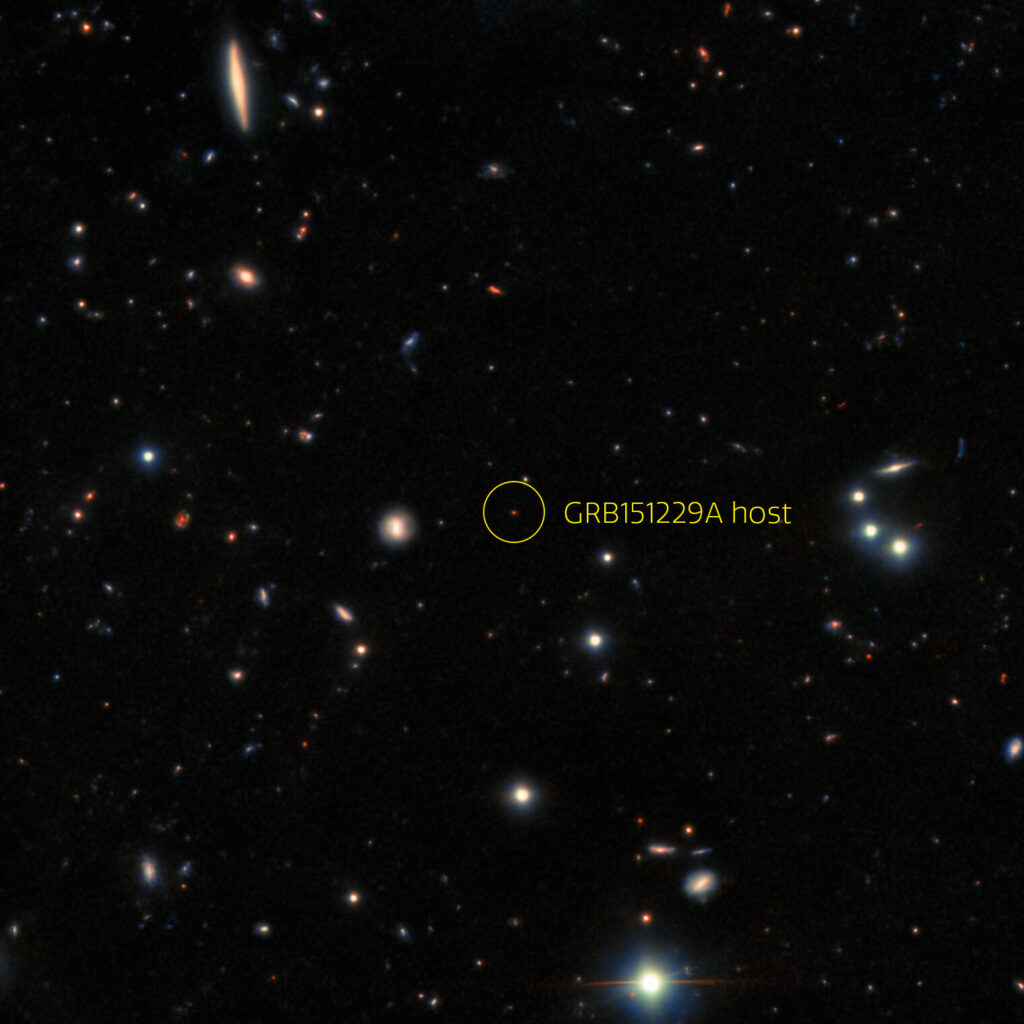After analyzing the data collected by the most powerful observatories of our time, astronomers have identified the source of isolated short gamma-ray bursts. It is a group of distant galaxies located at a distance of about 10 billion light-years from Earth.
Mystery of isolated gamma-ray bursts
Gamma-ray bursts represent the brightest electromagnetic events in the Universe. They can produce as much energy as the Sun during their entire lifetime. By duration, all gamma-ray bursts are divided into short and long bursts. Short ones are associated with events such as mergers of super compact objects (neutron stars and/or black holes). Long gamma-ray bursts often occur during collapses of massive luminaries.

Until recently, there was a mystery associated with short gamma-ray bursts. While the source of some of them was in galaxies relatively close to us, others flared up in the “void” — distant corners of the Universe where no galaxies were observed. They seemed to come out of nowhere.

Scientists had two main theories of the origin of isolated gamma-ray bursts. According to one of them, their source is systems of supercompact objects ejected from their parent galaxies billions of years ago. According to another, they flare up in galaxies located at such a great distance from Earth that telescopes simply cannot see them.
Collisions of neutron stars in the early Universe
A team of American astronomers decided to find the answer to this question. Initially, they examined a sample of 120 short gamma-ray bursts. It turned out that 43 of them are not associated with any known galaxies. After that, astronomers used the most powerful existing telescopes (including Hubble, VLT, Gemini and the Keck Observatory) to conduct deep surveys of areas where isolated short gamma-ray bursts were recorded.

Analysis of the observations showed that isolated gamma-ray bursts actually occur in very distant and therefore extremely dim galaxies. They are located at a distance of 8 to 10 billion light-years from Earth. Since most of the short gamma-ray bursts are associated with collisions of neutron stars, this means that in the past such events occurred much more often than now.
This discovery may help astronomers better understand the chemical evolution of the Universe. Neutron star mergers are accompanied by nuclear reactions producing elements such as gold, platinum and thorium. They play an important role in the processes of planet formation and can influence the prospects for the appearance of life. The large number of gamma-ray bursts in the past indicates that the early Universe contained significantly more heavy elements than previously thought.
According to https://noirlab.edu
Follow us on Twitter to get the most interesting space news in time
https://twitter.com/ust_magazine

